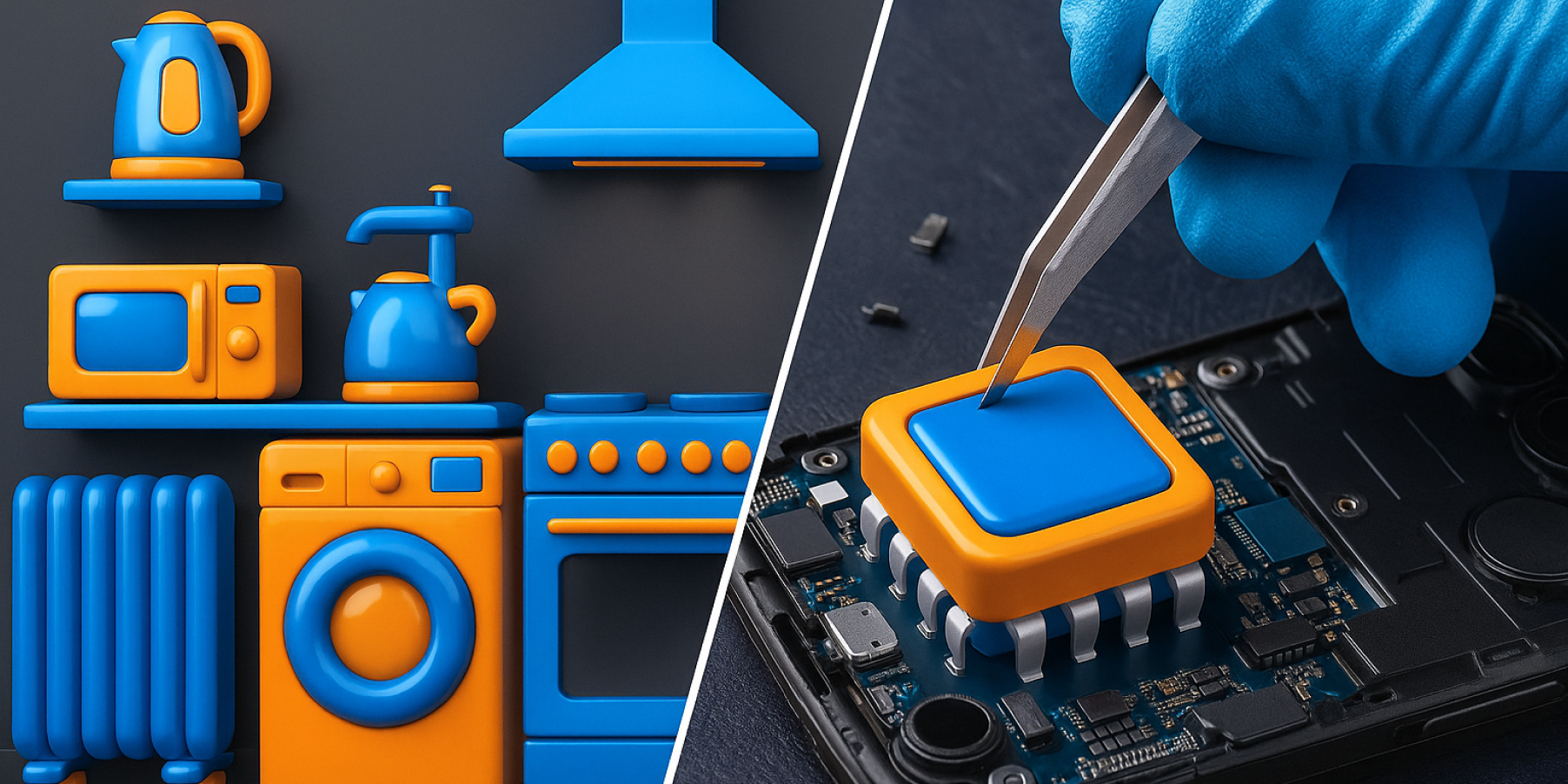Minimalism and Maximalism in the Europe Home Furniture Market: How Design Trends Influence Manufacturers and Decor Brands
September 28, 2025

The modern European home furnishings and decor market is shaped by two contrasting yet equally relevant trends. Minimalism attracts those who value order and convenience, while maximalism stands out with its layers and vibrant details.
This article explores how furniture producers, decor brands, and retail platforms can consider these currents in their strategies.
Key Interior Design Market Trends
Contemporary interior solutions revolve around two opposites that define this year’s main trends.
Soft minimalism features warm pastel tones, natural materials, and limited decor. It creates a cozy, “breathing” space for relaxation and psychological comfort. Wooden and plastic furniture pieces are particularly valued, as they maintain simplicity and functionality even in small spaces.

Image courtesy of vauntdesign.com
Curated maximalism emphasizes individuality without chaos, using large prints and decorative elements in a carefully considered context. In living rooms, this style is often highlighted through upholstery furniture and accent pieces made of glass or even metal furniture.

Image courtesy of apartmenttherapy.com
The market is gradually moving from strict opposites toward flexible, mixed styles, where balancing functionality, emotion, and personal expression is key. These combinations are rapidly gaining popularity.
Europe Home Furniture Market Size
The European home furnishings and decor market continues to grow steadily. According to Mordor Intelligence, its value is expected to reach around USD 262 billion in 2025, potentially rising to USD 330 billion by 2030, with an average CAGR forecast of nearly 5%.

Image courtesy of mordorintelligence.com
The minimalist furnishings segment is expanding particularly quickly. Grand View Research estimates its market size at USD 9.8 billion in 2024, with an annual growth rate of approximately 5.6%, outpacing the broader industry’s growth rate. As a result, the revenue share of the minimalist segment is gradually increasing, offering manufacturers of minimalist interior products strong potential to enhance their competitive position.

Image courtesy of grandviewresearch.com storage units
The growth of the European home furnishings sector is shaped by both market drivers and restraints. These factors create opportunities for expansion while also presenting challenges for producers. Below, we highlight the key influences.
Key Market Trends
Several core trends are shaping the modern European home interiors sector, influencing demand, design, and approaches to production and sales.
Sustainability and the circular economy.The EU Renovation Wave initiative is driving demand for furniture made from FSC-certified wood and materials that are easy to repair or recycle. Contemporary consumers value transparency from manufacturers and authentic materials.
Modularity and multifunctionality. The rise of small urban apartments is fueling demand for transformable solutions: sofa beds, foldable tables, storage units, and entertainment units that make efficient use of limited space.
Digitalization and e-commerce.Retail stores are gradually giving way to digital channels, where the e-commerce interior products segment sales is growing fastest. In particular, e-commerce furniture sales show steady growth. According to Mordor Intelligence, over 70% of furnishings sales in Europe occur online, with the B2C segment increasing by 6% annually.
Alternative sales channels.Rental stores appeal to younger consumers who value flexibility; discount furniture stores target price-sensitive buyers; and DIY furniture stores allow customers to save money while personalizing their interiors. At the same time, the direct-to-consumer furniture model manufacturer storesenable brands to sell directly without intermediaries and build closer relationships with clients.
Adapting to these trends helps brands boost sales efficiency and strengthen their competitive position in the industry.
Main Challenges for Furniture Manufacturers
The European furnishings market is growing and diversifying. However, producers face challenges that can reduce profitability and the competitiveness of their products.
- Price pressure and unstable costs. Fluctuations in the prices of wood, metal, and foam complicate production cost planning and increase overall product costs.
- Saturation of the minimalist segment. The long-standing dominance of minimalism in categories such as tables and desks, beds and mattresses, or sofas and armchairs can result in uniform, “sterile” interiors, causing furniture to lose uniqueness and competitive appeal.
- Risk of excessive maximalism. An abundance of bright colors and decorative elements can create visual clutter, making integration into contemporary home spaces more difficult. This is especially relevant for kitchen and dining furniture, where balancing style and practicality is essential.
- Rising sustainability expectations. Modern consumers increasingly expect furnishings that can be repaired, transformed, or reused, adding new demands for materials and design.
Success for manufacturers now depends on their ability to balance economic, stylistic, and technological challenges.
How to Stay Competitive in the Europe Home Furniture Market

To succeed, companies need to consider current design trends, regional characteristics, and invest in digital commerce.
- Maintain practical aesthetics.
Make minimalist and transformable room interior pieces both functional and visually appealing. Simple forms and modularity should be combined with a distinctive aesthetic to attract a wide audience — from residents of small apartments to office clients. - Combine emotional appeal with functionality.
Maximalism evokes an emotional response through colors, textures, and decorative elements. Pair versatile basic furnishings with bold accents, especially in dining and kitchen furniture, to achieve a balance between practicality and self-expression. - Apply multifunctionality and circular economy principles.
Offer interior products that are easy to repair and reuse. Use modular constructions, upcycling of old pieces, and buy-back programs. This reduces waste while meeting the expectations of eco-conscious customers. - Leverage digital tools.
Implement digital solutions such as AR/VR try-ons and personalized services. These tools help adapt designs quickly to customer needs and create additional industry opportunities in furniture and indoor environments style.
Applying these strategies allows producers to expand industry reach, increase customer loyalty, and strengthen their position across both premium and mass-market segments.
Conclusion
The European home furniture industry is growing. Consumers value simple yet expressive design, sustainable materials, and the ability to tailor products to their needs. Listing your products on the ServiCom marketplace in the “Furniture and Interior” category can help local buyers find you faster and boost sales.









